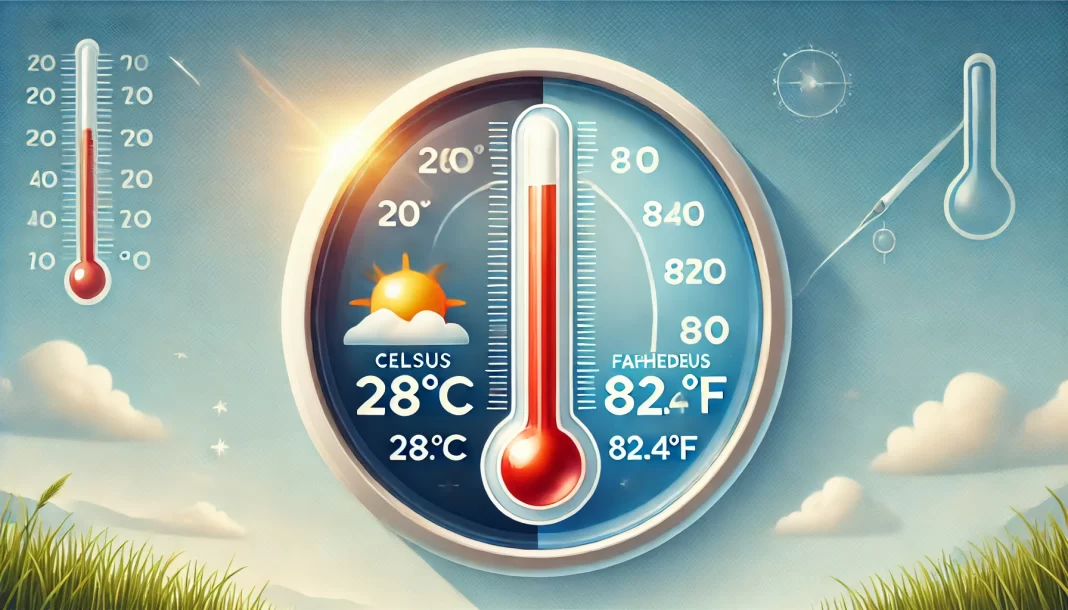Temperature is something we encounter every day, whether we’re checking the weather, cooking, or simply planning our day. But have you ever found yourself confused when someone mentions a temperature in a scale you’re not familiar with? For example, what does 28 degrees Celsius mean in Fahrenheit? This post will help you understand how to convert Celsius to Fahrenheit and why it matters.
Why Do We Use Different Temperature Scales?
The Celsius scale is the most common system worldwide, used in science and daily life across many countries. It’s straightforward: water freezes at 0°C and boils at 100°C. But in the United States and a few other countries, Fahrenheit is the go-to scale, where water freezes at 32°F and boils at 212°F.
Both systems serve the same purpose but in slightly different ways. Celsius is linear and often easier to calculate with, while Fahrenheit offers finer temperature distinctions, which some people find more practical in daily weather measurements.
How to Convert 28 Degrees Celsius to Fahrenheit
Converting Celsius to Fahrenheit might sound tricky, but there’s a simple formula to remember:
Fahrenheit (°F)=Celsius (°C)×95+32
Fahrenheit (°F)=Celsius (°C)×
59+32
Let’s apply this formula to 28°C:
- Multiply 28 by 9/5:
- 28×95=50.4
- 28×
- 5
- 9
-
- =50.4
- Add 32 to the result:
- 50.4+32=82.4
- 50.4+32=82.4
So, 28°C equals 82.4°F. Now you know that 28°C, a comfortable temperature in Celsius, translates to a warm 82.4°F on the Fahrenheit scale.
Why This Conversion Matters
Understanding how to switch between Celsius and Fahrenheit is useful for several reasons:
Traveling: If you’re visiting a country that uses a different temperature scale, you’ll know what to expect from the weather forecast. For example, 28°C in Europe or Asia feels just like 82.4°F in the United States.
Cooking: Recipes from different countries often list oven temperatures in Celsius. Being able to convert ensures your culinary creations turn out just right.
Science and Education: If you’re studying or working with data in an international setting, knowing how to convert temperatures makes collaboration easier.
A Handy Trick for Quick Conversions
If you’re in a hurry, there’s a rough way to estimate Celsius to Fahrenheit:
Double the Celsius number and add 30.
- For 28°C:
- 28×2=56, 56+30=86
- 28×2=56,56+30=86
This estimate gives you a ballpark figure of 86°F. While not as precise as the formula, it’s useful when you need a quick approximation.
What Does 28°C Feel Like?
For most people, 28°C feels warm but not excessively hot. It’s the kind of temperature that’s perfect for outdoor activities like picnics or beach trips. However, factors like humidity and wind can influence how the temperature feels on your skin. For example, in humid climates, 28°C might feel hotter because of the moisture in the air.
Celsius vs. Fahrenheit: Which Is Better?
While the Celsius scale is simpler and widely accepted, the Fahrenheit scale’s finer gradations make it popular in the United States. Both systems have their strengths, and the best one to use often depends on your context. Scientists and travelers benefit from knowing both, as it allows them to adapt easily to different settings.
Conclusion
Converting 28 degrees Celsius to Fahrenheit isn’t just a math problem—it’s a practical skill that connects you with the world. Whether you’re planning a vacation, cooking an international dish, or studying global climate patterns, knowing how to switch between Celsius and Fahrenheit ensures you’re always on the same page.
Next time someone mentions the temperature in Celsius, impress them by quickly converting it to Fahrenheit—or better yet, share the simple formula. Now that you know 28°C is 82.4°F, you’re one step closer to mastering the art of temperature conversions.



